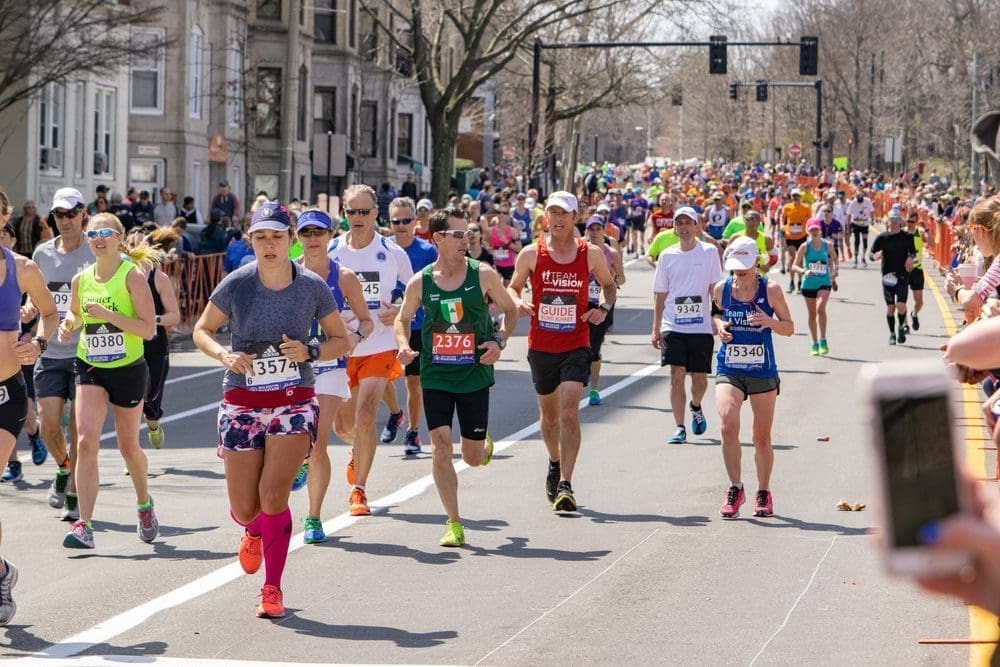A Quick Takeaway
The Story Behind the Trend
How to Make It Work for You
The Community View
Crossing the finish line of a marathon is an iconic achievement, but the journey to get there is profoundly influenced by the energy and encouragement from the sidelines. Mastering the art of marathon spectating is about more than just showing up; it’s about strategically choosing your location, preparing your cheering toolkit, and delivering impactful support that can genuinely uplift a runner. Whether you’re there for a specific friend or family member, or simply to soak in the incredible atmosphere of human endurance, understanding how to cheer like a pro can transform the race experience for everyone involved, offering crucial psychological boosts and contributing to the vibrant tapestry of race day.
The Undeniable Impact of Your Cheers
While runners train for months to physically prepare for 26.2 miles, the mental game often becomes the true test of their resolve. This is where spectators become invaluable. A well-timed cheer, a familiar face, or an encouraging sign can provide a surge of adrenaline, a moment of distraction from pain, or the mental fortitude needed to push through a challenging mile. Your presence on the course serves as a powerful reminder that they are not alone in their immense effort, fostering a sense of community and shared accomplishment.
The psychological boost from external support can manifest physically, helping runners tap into reserves they didn’t know they had. Hearing their name, seeing a personalized message, or simply feeling the collective roar of the crowd can trigger endorphin releases, momentarily alleviating fatigue and pain. This isn’t just anecdotal; studies on athletic performance often highlight the significant role of social support in endurance events.
Strategic Spectating: Where to Plant Yourself
Choosing your spectating spot isn’t arbitrary; it’s a strategic decision that can maximize your impact. Different points along the course offer unique opportunities to connect with runners and provide specific types of encouragement.
The Early Miles (1-6)
These miles are characterized by high energy and excitement. Runners are fresh, often still finding their pace, and the crowds are typically thickest near the start. Spectating here offers a chance to see your runner looking strong and enthusiastic. Your cheers at this stage contribute to the initial buzz and help them settle into their rhythm, but the need for critical encouragement is generally lower.
The Middle Miles (7-20)
This stretch is often where the novelty wears off, and the physical demands begin to set in. Runners might still feel good, but the mental challenge of maintaining pace for the long haul starts. Spectating in these middle miles is crucial for providing sustained motivation. A second sighting of your runner here can be incredibly impactful, reminding them of your unwavering support as they enter the tougher segments of the race.
The Later Miles (21-25): The “Wall” Zone
This is arguably the most critical zone for spectators. Many runners hit the infamous “wall” around miles 18-22, experiencing extreme fatigue, muscle pain, and mental doubt. Your cheers here can be the difference between a runner pushing through or slowing down significantly. Loud, enthusiastic, and personalized encouragement in these final miles can provide the emotional and psychological lift needed to overcome the toughest part of the race. This is where your support truly shines.
The Finish Line (26.2)
The finish line is a place of immense celebration and relief. While it’s incredibly emotional, it can also be the most challenging spot to spectate, especially if you’re trying to spot a specific runner. Crowds are dense, and runners are often moving quickly, focused solely on the final meters. If you plan to meet your runner here, ensure you have a pre-arranged meeting spot a little beyond the actual finish line arch.
The Double-Dip Strategy
For the truly dedicated spectator, a “double-dip” strategy involves moving to two or even three different locations along the course. This requires careful planning, understanding public transport routes, and being prepared to move quickly. Seeing a familiar face multiple times can be a tremendous boost for a runner, reinforcing your consistent support throughout their grueling journey.
Your Spectator Toolkit: What to Bring
Being a pro spectator means coming prepared. Your toolkit should prioritize comfort, practicality, and maximum cheering impact.
- Comfortable Shoes and Layers: You’ll be standing for hours, potentially walking between spots. Dress for the weather, as it can change, and you won’t be generating much body heat.
- Hydration and Snacks: Keep yourself fueled and hydrated. It’s a long day for spectators too!
- Charged Phone: Essential for tracking your runner, taking photos, and coordinating with others.
- Creative Signs: Personalized signs with your runner’s name, an inside joke, or a powerful motivational message can be incredibly effective. Keep them concise and legible.
- Cheering Aids: Cowbells, small air horns (use sparingly and respectfully), or even just your voice.
- Small First-Aid: While not for general distribution, having a few blister bandages or anti-chafing balm could be a lifesaver if your runner stops to see you.
Crafting the Perfect Cheer: What to Say and How to Say It
The quality of your cheer matters as much as its volume. Thoughtful, impactful words can resonate far more than generic shouts.
Personalized Cheers
The most effective cheers are often personal. Use your runner’s name: “Go, [Runner’s Name], you’ve got this!” or “Looking strong, [Runner’s Name]!” If you know their bib number, sometimes shouting that can also grab their attention. Inside jokes or specific affirmations related to their training can also be incredibly powerful.
Generic but Powerful
Don’t underestimate the impact of universal encouragement. “You’re doing great!”, “Keep pushing!”, “Awesome job!”, “Looking strong!”, and “Almost there!” (but only when it’s truly almost there, like the last mile!) are all excellent. Cheer for everyone, not just your specific runner. This contributes to the overall positive atmosphere that benefits all participants.
Avoiding Negativity
Refrain from comments that might be perceived as negative, even if well-intentioned. Avoid saying things like “You look tired,” or “Hurry up!” Focus on positive reinforcement and encouragement. Also, be mindful of when you tell someone they are “almost there.” For a marathon, “almost there” means the last mile, not mile 18.
Volume and Energy
Be loud, be enthusiastic, and project your voice. Your energy is contagious. A strong, clear cheer can cut through the noise and reach a struggling runner. Use your hands, clap, and show your excitement.
Spectator Etiquette: The Unwritten Rules
Being a pro spectator also means being respectful and considerate of everyone around you.
- Respect the Runners’ Space: Never step onto the course, block their path, or try to hand them unauthorized items.
- Don’t Block Views: Be mindful of other spectators. If you’re holding a large sign, hold it high or to the side so as not to obstruct others’ views.
- Stay Hydrated and Fueled: As mentioned, it’s a long day. Take care of yourself so you can continue to cheer effectively.
- Know Race Rules: Be aware of any specific rules the race organizers have for spectators, especially regarding unauthorized aid or items.
- Clean Up: Leave your spectating spot as clean as you found it.
Beyond the Race: Post-Marathon Support
Your role as a supporter doesn’t end at the finish line. Planning for the post-race experience is just as important.
- Meeting Point Strategy: Establish a clear, easy-to-find meeting point away from the immediate finish area. This prevents stress for both you and your exhausted runner.
- Recovery Essentials: Have a warm, dry change of clothes, comfortable shoes, and some easy-to-digest food and drink ready for them.
- Listen and Celebrate: After the race, your runner will likely be exhausted but also bursting with stories and emotions. Be a patient listener and celebrate their incredible achievement, regardless of their time or how they felt.
The act of spectating a marathon is a profound way to connect with the human spirit of perseverance and community. By adopting a strategic approach, preparing thoughtfully, and cheering with genuine enthusiasm and empathy, you transcend the role of a mere observer. You become an active participant in the journey, providing vital encouragement that helps runners push beyond their perceived limits and ultimately, triumph. Your cheers are not just sounds; they are a powerful force that fuels the extraordinary feat of a marathon.








